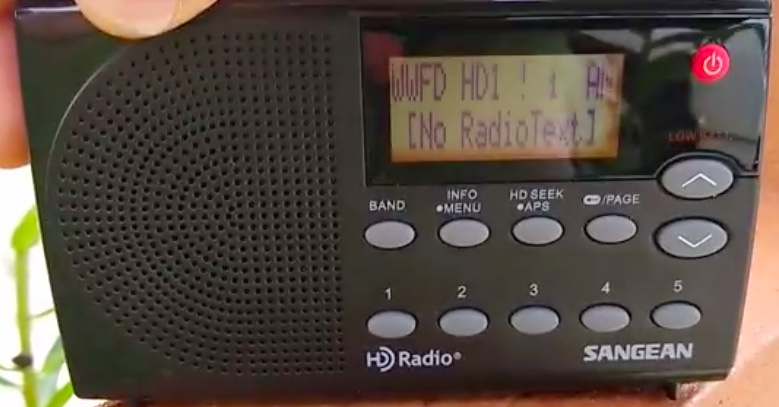(Source: LA Daily News)
Radio: Is that an AM digital signal I hear? No, but it could be.
by Richard Wagoner
One possible version of AM radio’s future was posted on a Facebook group called “I Love AM Radio.” It came from group member Steve West and was a recording of WWFD/Frederick, MD as received on a radio in Beacon Falls, CT. This is a driving distance of about 320 miles via I-95; as the crow flies it’s probably closer to 275. Still very impressive.
Of course, long-distance AM radio reception is not new … people have been listening to distant stations since radio broadcasting began in the 1920s. In my case, when I was young and before I even knew what phenomenon I was really experiencing, I remember picking up stations at night from great distances on my tube table radio, then wondering why I could not hear them during the day.
I also wondered why I picked up a buzz sometimes … turned out that was due to my Dad using a fluorescent light in his office down the hallway from my bedroom. But I digress.
What makes this recording intriguing is that WWFD doesn’t transmit analog audio like most stations. Instead, they are all digital, under special permission of the FCC. Only those with HD radios can hear them. West is demonstrating that long distance digital AM radio reception is indeed possible, and — perhaps (though it may be wishful thinking) — AM radio could be better than FM from a practical standpoint.
All-digital is a mode of the HD Radio system that uses the space formerly used for analog broadcasting and puts the digital signal there instead of sandwiching the digital around the analog as with the hybrid system currently in use on all other AM HD stations, which locally includes KNX (1070 AM), KSUR (“K-Surf” 1260 AM), KFWB (980 AM), and KBRT (740 AM).
The problem with the hybrid mode is that the digital portion of the signal extends out far enough from the main frequency of a station and thus can cause interference to other stations nearby. Hybrid mode thus limits the digital signal to a fraction of a station’s broadcast power.
All-digital, being centered on the frequency, allows a station to broadcast the digital signal at a station’s full power, permitting better coverage, less interference, and better sound quality.
At least that’s the theory. Right now more testing is needed, primarily to see what happens when more stations are using the system. The problem is the all-digital system is not yet authorized without special permission, and of course, many stations would be reluctant to try it, as doing so means losing every listener without an HD radio … most of the potential audience.
West’s recording is not perfect. The signal is like any digital signal — as on your computer or your digital television, the signal is either there … or it is not. Being received at such a great distance the reception is not perfect and cuts out, but as I said, it does show some great potential.[…]
Click here to read the full article at the Los Angeles Daily News.

